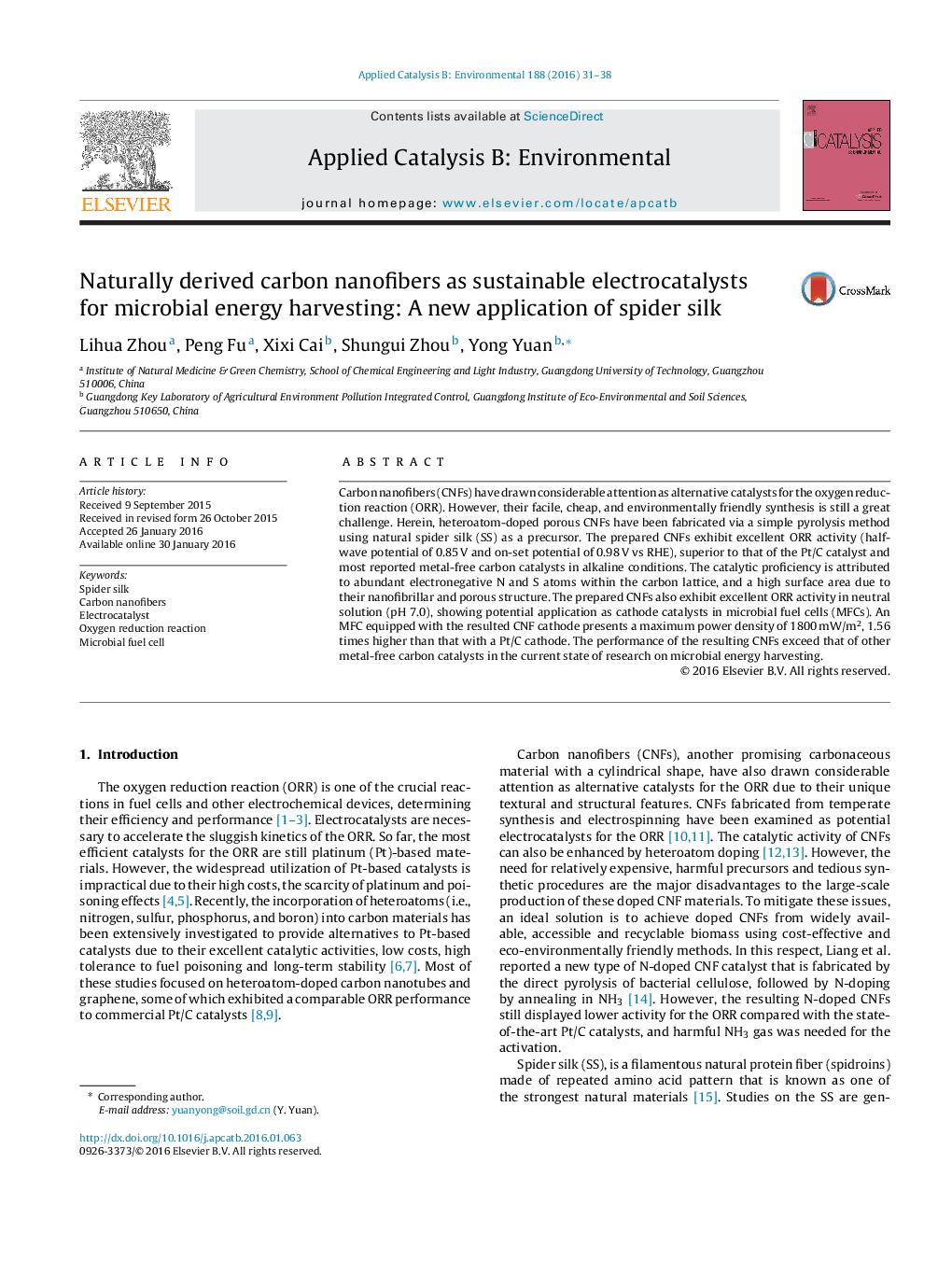| Article ID | Journal | Published Year | Pages | File Type |
|---|---|---|---|---|
| 44995 | Applied Catalysis B: Environmental | 2016 | 8 Pages |
•Self-doped porous carbon nanofiber is prepared via thermal treatment of spider silk.•The resulting carbon nanofiber shows a great ORR catalytic efficiency and stability.•The catalytic activity is assigned to N and S doping and high surface area of CNF.•An MFC with the carbon nanofiber cathode outperforms that with the Pt/C cathode.
Carbon nanofibers (CNFs) have drawn considerable attention as alternative catalysts for the oxygen reduction reaction (ORR). However, their facile, cheap, and environmentally friendly synthesis is still a great challenge. Herein, heteroatom-doped porous CNFs have been fabricated via a simple pyrolysis method using natural spider silk (SS) as a precursor. The prepared CNFs exhibit excellent ORR activity (half-wave potential of 0.85 V and on-set potential of 0.98 V vs RHE), superior to that of the Pt/C catalyst and most reported metal-free carbon catalysts in alkaline conditions. The catalytic proficiency is attributed to abundant electronegative N and S atoms within the carbon lattice, and a high surface area due to their nanofibrillar and porous structure. The prepared CNFs also exhibit excellent ORR activity in neutral solution (pH 7.0), showing potential application as cathode catalysts in microbial fuel cells (MFCs). An MFC equipped with the resulted CNF cathode presents a maximum power density of 1800 mW/m2, 1.56 times higher than that with a Pt/C cathode. The performance of the resulting CNFs exceed that of other metal-free carbon catalysts in the current state of research on microbial energy harvesting.
Graphical abstractFigure optionsDownload full-size imageDownload as PowerPoint slide
